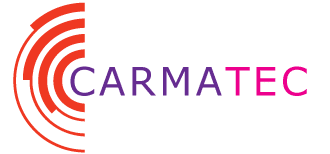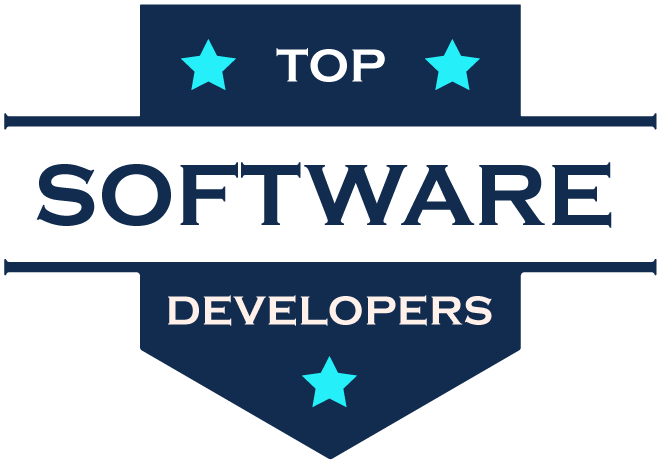Infrastructure as Code (IaC) has become a cornerstone of modern DevOps, enabling organizations to automate, scale, and manage IT infrastructure with unprecedented efficiency. By treating infrastructure as programmable code, IaC eliminates manual configuration errors, ensures consistency, and accelerates deployments. In 2025, the IaC market is projected to grow to USD 3.3 billion, driven by the rise of cloud-native technologies and multi-cloud strategies. This blog explores the Top 10 Most Useful Infrastructure as Code (IaC) Tools for 2025, detailing their features, use cases, and benefits for businesses aiming to optimize their infrastructure management.
1. What is Infrastructure as Code (IaC)?
IaC is the practice of managing and provisioning IT infrastructure—servers, networks, storage, and more—through machine-readable code rather than manual processes. It allows DevOps teams to automate infrastructure setup, ensure repeatability, and integrate with CI/CD-Pipelines.
- Key Principles:
- Automatisierung: Reduces manual intervention, minimizing errors.
- Versionskontrolle: Infrastructure code is stored in repositories (e.g., Git), enabling tracking and rollback.
- Consistency: Ensures identical environments across development, testing, and production.
- Skalierbarkeit: Simplifies scaling infrastructure to meet demand.
- Approaches:
- Declarative: Specifies the desired end state (e.g., “I want three servers”).
- Imperative: Defines step-by-step instructions to achieve the state.
In 2025, IaC tools are evolving with KI-Integration, enhanced security scanning, and multi-cloud support, making them indispensable for enterprises.
2. Why IaC Tools Matter in 2025
The rapid adoption of cloud computing, Kubernetes, and hybrid environments has made IaC critical. Key drivers include:
- Multi-Cloud Adoption: Businesses use multiple cloud providers (AWS, Azure, GCP) for flexibility, requiring tools that support cross-platform provisioning.
- Security Needs: Automated scanning for misconfigurations reduces vulnerabilities in IaC templates.
- AI and Automation: AI-driven tools optimize infrastructure management, predicting resource needs and auto-remediating issues.
- Developer Productivity: IaC integrates with CI/CD, enabling faster deployments and reducing cognitive load.
The right IaC tool can streamline operations, cut costs, and enhance security, making it a strategic investment for 2025.
3. Top 10 IaC Tools for 2025
Below is a curated list of the top 10 IaC tools for 2025, selected based on popularity, features, community support, and relevance to modern DevOps workflows. Each tool is evaluated for its strengths, use cases, and unique capabilities.
3.1 Terraform
Überblick: Developed by HashiCorp, Terraform is the gold standard for IaC, known for its cloud-agnostic approach and declarative HashiCorp Configuration Language (HCL). Despite a 2023 license change to BSL, it remains widely used.
- Hauptmerkmale:
- Multi-cloud support (AWS, Azure, GCP, and more).
- State management via terraform.tfstate tracks resource changes.
- Modular design for reusable code.
- terraform plan previews changes to prevent errors.
- Integrates with CI/CD tools like GitHub Actions.
- Anwendungsfälle:
- Managing hybrid and multi-cloud infrastructures.
- Automating large-scale deployments with reusable modules.
- Ensuring consistent environments across teams.
- Vorteile:
- Extensive provider ecosystem (e.g., DigitalOcean, Cloudflare).
- Strong community and module registry.
- Robust state management.
- Nachteile:
- Steile Lernkurve für Anfänger.
- BSL license may deter some open-source purists.
- Why It’s Useful in 2025: Terraform’s flexibility and vast ecosystem make it ideal for complex, multi-cloud environments, especially for enterprises scaling rapidly.
3.2 OpenTofu
Überblick: OpenTofu, a Linux Foundation project, emerged as an open-source alternative to Terraform after its license change. It maintains compatibility with HCL and focuses on community-driven development.
- Hauptmerkmale:
- Open-source under MPL 2.0 license.
- Multi-cloud and on-premises support.
- Seamless migration from Terraform (uses same state files).
- Active community contributions for new providers.
- Anwendungsfälle:
- Organizations prioritizing open-source tools.
- Migrating from Terraform without workflow disruption.
- Managing Kubernetes or hybrid infrastructures.
- Vorteile:
- Free and community-driven.
- Backward compatibility with Terraform modules.
- Rapid feature updates.
- Nachteile:
- Smaller ecosystem than Terraform.
- Still maturing compared to established tools.
- Why It’s Useful in 2025: OpenTofu’s open-source ethos and Terraform compatibility make it a go-to for cost-conscious teams embracing community-driven IaC.
3.3 AWS CloudFormation
Überblick: AWS CloudFormation is Amazon’s native IaC tool, designed for provisioning and managing AWS resources using JSON or YAML templates.
- Hauptmerkmale:
- Deep integration with AWS services (EC2, S3, Lambda).
- Nested stacks for complex architectures.
- No state management (handled by AWS).
- Supports drift detection to identify configuration changes.
- Anwendungsfälle:
- Automating AWS-only infrastructure deployments.
- Managing multi-region AWS stacks.
- Simplifying compliance with AWS-specific workflows.
- Vorteile:
- Seamless AWS integration.
- Well-documented and supported by AWS.
- Cost-effective for AWS-centric teams.
- Nachteile:
- Limited to AWS, reducing multi-cloud flexibility.
- Verbose syntax compared to HCL.
- Why It’s Useful in 2025: For AWS-heavy organizations, CloudFormation’s native integration and scalability make it a reliable choice for streamlined deployments.
3.4 Ansible
Überblick: Red Hat’s Ansible is an open-source IaC tool focused on configuration management and automation, using YAML-based playbooks for a declarative approach.
- Hauptmerkmale:
- Agentless architecture for lightweight deployment.
- Extensive module library for diverse tasks (e.g., app deployment, server setup).
- Supports cloud, on-premises, and container environments.
- Idempotent operations ensure consistent results.
- Anwendungsfälle:
- Automating server configurations and software installations.
- Managing hybrid environments with minimal setup.
- Orchestrating complex workflows across teams.
- Vorteile:
- Simple, human-readable syntax.
- Large community and module ecosystem.
- No agent installation required.
- Nachteile:
- Less suited for provisioning compared to Terraform.
- Limited for advanced infrastructure orchestration.
- Why It’s Useful in 2025: Ansible’s simplicity and versatility make it ideal for teams needing configuration management alongside IaC, especially in hybrid setups.
3.5 Pulumi
Überblick: Pulumi stands out by allowing developers to define infrastructure using general-purpose programming languages like Python, JavaScript, TypeScript, and Go, rather than domain-specific languages.
- Hauptmerkmale:
- Multi-cloud support (AWS, Azure, GCP).
- Real-time previews of infrastructure changes.
- Integrates with existing developer tools (e.g., VS Code).
- Supports imperative and declarative approaches.
- Anwendungsfälle:
- Developers preferring programming languages over DSLs.
- Building complex, programmatic infrastructure logic.
- Integrating IaC with application code.
- Vorteile:
- Familiar languages reduce learning curve.
- Flexible for dynamic configurations.
- Strong CI/CD integration.
- Nachteile:
- Less mature ecosystem than Terraform.
- Code can become complex for large projects.
- Why It’s Useful in 2025: Pulumi’s developer-friendly approach and language flexibility make it a top choice for teams embedding IaC into broader software workflows.
3.6 Checkov
Überblick: Checkov, an open-source static analysis tool by Bridgecrew (Palo Alto Networks), scans IaC files for security misconfigurations and compliance issues.
- Hauptmerkmale:
- Supports Terraform, CloudFormation, Kubernetes, and more.
- Over 750 predefined security policies.
- Custom policy creation in Python or YAML.
- CI/CD integration (GitHub Actions, GitLab CI).
- Anwendungsfälle:
- Securing IaC templates before deployment.
- Ensuring compliance with standards like SOC 2 or GDPR.
- Auditing multi-cloud configurations.
- Vorteile:
- Open-source and extensible.
- Broad IaC framework support.
- Easy integration with DevOps pipelines.
- Nachteile:
- Focused on security, not provisioning.
- Requires additional tools for full IaC workflows.
- Why It’s Useful in 2025: With rising cyber threats, Checkov’s proactive scanning ensures secure IaC deployments, a critical need in 2025.
3.7 Spacelift
Überblick: Spacelift is an IaC orchestration platform that enhances multi-IaC workflows, supporting Terraform, OpenTofu, CloudFormation, Ansible, and Pulumi.
- Hauptmerkmale:
- Manages complex, multi-tool IaC pipelines.
- Stack dependencies for end-to-end workflows.
- Policy-as-code for governance.
- Integrates with version control systems (GitHub, GitLab).
- Anwendungsfälle:
- Orchestrating large-scale, multi-team IaC projects.
- Enforcing compliance and security policies.
- Streamlining CI/CD for infrastructure changes.
- Vorteile:
- Unified management of diverse IaC tools.
- Strong collaboration features.
- Skalierbar für Unternehmensanforderungen.
- Nachteile:
- Paid platform, unlike open-source alternatives.
- Requires setup for smaller teams.
- Why It’s Useful in 2025: Spacelift’s orchestration capabilities make it invaluable for enterprises managing complex, multi-IaC environments.
3.8 Azure Resource Manager (ARM)
Überblick: Azure Resource Manager is Microsoft’s native IaC tool for provisioning and managing Azure resources using JSON templates or Bicep, a simplified DSL.
- Hauptmerkmale:
- Deep Azure service integration.
- Role-based access control (RBAC) for security.
- Template-based deployments for repeatability.
- Bicep simplifies syntax over JSON.
- Anwendungsfälle:
- Automating Azure infrastructure deployments.
- Managing resource groups and policies.
- Supporting Azure-centric DevOps workflows.
- Vorteile:
- Native Azure integration.
- Bicep improves usability.
- Strong Microsoft support.
- Nachteile:
- Azure-only, limiting multi-cloud use.
- Bicep adoption still growing.
- Why It’s Useful in 2025: ARM’s seamless Azure integration and Bicep’s user-friendly syntax make it a top pick for Azure-focused organizations.
3.9 Google Cloud Deployment Manager
Überblick: Google Cloud Deployment Manager is GCP’s IaC tool, enabling resource provisioning using YAML templates or Python/Jinja2 for dynamic configurations.
- Hauptmerkmale:
- Native GCP service integration.
- Template-based deployments with preview capabilities.
- Supports modular resource management.
- Automates dependency handling.
- Anwendungsfälle:
- Automating GCP infrastructure setups.
- Managing Kubernetes clusters on GKE.
- Streamlining GCP resource scaling.
- Vorteile:
- Tight GCP integration.
- Flexible with Python/Jinja2.
- Cost-effective for GCP users.
- Nachteile:
- Limited to GCP environments.
- Smaller community than Terraform.
- Why It’s Useful in 2025: For GCP-centric teams, Deployment Manager’s simplicity and native integration streamline infrastructure management.
3.10 Env0
Überblick: Env0 is an IaC automation platform that simplifies multi-cloud and cloud-native management, supporting Terraform, OpenTofu, Pulumi, and Kubernetes.
- Hauptmerkmale:
- Custom workflows for tailored deployments.
- Cost estimation and monitoring for cloud resources.
- Shared templates for team collaboration.
- Integrates with CI/CD and observability tools.
- Anwendungsfälle:
- Managing multi-cloud IaC deployments.
- Enforcing governance and cost controls.
- Simplifying complex DevOps pipelines.
- Vorteile:
- Benutzerfreundliche Schnittstelle.
- Strong cost management features.
- Supports multiple IaC frameworks.
- Nachteile:
- Paid solution with limited free tier.
- Less suited for small-scale projects.
- Why It’s Useful in 2025: Env0’s focus on automation, governance, and cost optimization makes it a standout for teams managing cloud-native infrastructures.
4. How to Choose the Right IaC Tool
Selecting an IaC tool depends on your organization’s needs, cloud strategy, and team expertise. Consider these factors:
- Cloud Environment: Single-cloud (e.g., AWS CloudFormation for AWS) or multi-cloud (Terraform, OpenTofu).
- Team Skills: Developers comfortable with programming languages may prefer Pulumi; YAML users may opt for Ansible.
- Security Requirements: Tools like Checkov enhance security scanning, critical for regulated industries.
- Skalierbarkeit: Spacelift and Env0 excel in large-scale, multi-team workflows.
- Budget: Open-source tools (OpenTofu, Ansible) are cost-effective; paid platforms (Spacelift, Env0) offer advanced features.
- Integration: Ensure compatibility with CI/CD, version control, and existing tools.
In 2025, hybrid approaches—combining provisioning tools (Terraform) with orchestration (Spacelift) and security (Checkov)—are increasingly common.
5. Trends Shaping IaC in 2025
IaC is evolving rapidly, driven by technological advancements and industry needs. Key trends include:
- KI-Integration: AI-driven tools like Kubiya automate routine tasks, such as log analysis or resource provisioning.
- Multi-IaC Adoption: Teams use multiple tools (e.g., Terraform for provisioning, Ansible for configuration) with platforms like Spacelift for orchestration.
- Security Focus: Tools like Checkov and Terrascan address rising concerns about misconfigurations, with 80% of GitHub repositories facing insecure workflows.
- Open-Source Growth: OpenTofu’s rise reflects demand for community-driven, cost-free alternatives.
- Platform Engineering: IaC supports self-service platforms, reducing developer cognitive load.
These trends underscore the need for versatile, secure, and scalable IaC tools in 2025.
6. Challenges and Best Practices
While IaC offers significant benefits, it comes with challenges:
- Configuration Drift: Manual changes can deviate from code-defined states. Use drift detection (e.g., CloudFormation, Terraform).
- Sicherheitsrisiken: Hard-coded secrets or misconfigurations can lead to breaches. Integrate scanning tools like Checkov.
- Lernkurve: Tools like Terraform require training. Invest in team upskilling.
- State Management: Improper handling of state files can cause errors. Use remote state storage (e.g., Terraform Cloud).
Best Practices:
- Store IaC code in version-controlled repositories (Git).
- Use modular designs for reusability.
- Automate testing with tools like Terratest.
- Implement policy-as-code for governance.
- Regularly audit configurations for compliance.
Abschluss
Infrastructure as Code is revolutionizing IT operations in 2025, enabling automation, scalability, and consistency in a cloud-driven world. The Top 10 Most Useful IaC Tools for 2025—Terraform, OpenTofu, AWS CloudFormation, Ansible, Pulumi, Checkov, Spacelift, Azure Resource Manager, Google Cloud Deployment Manager- offer diverse solutions for provisioning, configuration, security, and orchestration. By aligning these tools with your organization’s cloud strategy, team skills, and security needs, you can streamline deployments, reduce costs, and stay competitive. For expert guidance in implementing these IaC tools and building robust, scalable infrastructure, trust Carmatec to deliver tailored solutions that drive operational excellence and innovation.













